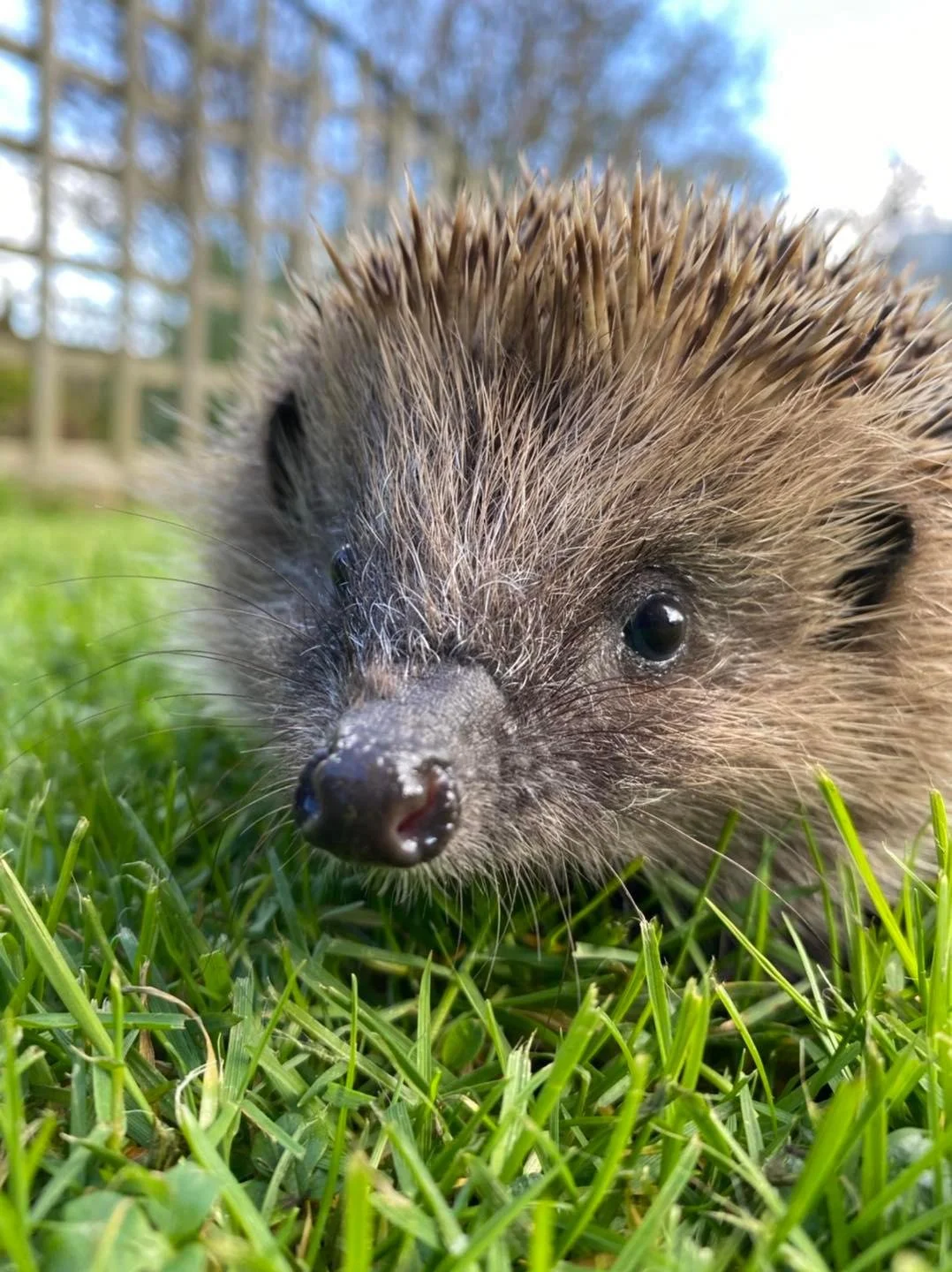Helping Hedgehogs
Some will be surprised to learn that hedgehogs are common visitors in urban areas. Even in Newquay, a town on the coast, there is a population surviving in the built up spaces. I say ‘surviving’ as they heavily rely on our gardens and face numerous challenges. Sadly, we might only notice their presence when they have been hit by a car, but the worrying decline of their population across the UK means that we should be helping our favourite little mammals as much as possible.
I caught up with local charity, Prickles and Paws to see if there were specific things we could be doing in our urban gardens to help the little guys out. I also wanted to help share best garden practices at different times of the year when hedgehogs are particularly susceptible to injury and illness. Make your space a welcome sanctuary, even (especially) when you live on a busy city street.
Access.
When you next leave your house, pay attention to yours and your neighbours front gardens. Do they have a fence or wall running down the front of it? Does it have a step? Are there any gaps?
A hedgehog needs a gap of 13cm / 13cm to access the other side of a barrier. It also helps to have a ramp or small intermediary steps so they can get upstairs. How many houses on your street provide those? If it’s anything like my neighbourhood; very few. I imagine being a hedgehog and walking along the path, trying to get in to every front yard where all the grubs are waiting to be dinner, with no success. It’s really sad.
So if you can provide access, you have increased their ability to find food and shelter. Create a little hedgehog highway. Ask neighbours if they can do the same and your local hoggies will have an attractive street to visit every night.
Hedgehogs tend to follow walls or barriers, so one hole is enough for an entrance and exit. If you have a nice neighbour who is happy to share a gap in your fence, even better!Food.
Ok- if you are creating access, but the hedgehog enters a yard of astro turf and not much else, then there isn’t a whole lot of benefit. Most of a hedgehog’s diet is made up of beetles, caterpillars, earthworms and other invertebrates, plus carrion, eggs and sometimes- hedgehog food. You can help them scavenge for their natural prey by providing lots of food and habitat for the invertebrates they eat. Insects like damp, dark places like old wood or piles of leaves. Caterpillars and beetles love eating through a variety of flowering plants. Traditional gardeners may be dismayed by this, but a wildlife gardener will delight in a nasturtium or buddleja covered in caterpillars. Certainly the hoggies will enjoy them!
If you want to add to their meals, you can leave appropriate food out for them. See here for the do’s and don’t’s.
3. Be a good wildlife gardener.
If you are on this page and interested in gardening for wildlife, then you are probably on the right track to creating a hog-safe space. The basics- don’t use chemical pesticides or herbicides, leave messy areas, encourage all forms of wildlife, reduce plastic in your garden… these are all pretty self explanatory and are essential for good wildlife garden practice.
4. Extra attention
- Hogs will appreciate extra attention to any netting or entanglement opportunities- keep them off the ground.
- A good wildlife gardener will have little use for a strimmer and these can cause some of the most serious injuries for a hedgehog. They freeze under threat, so a strimmer can make easy work of a hog in long grass. If a strimmer or mower is truly necessary, make sure to fully scour the area first and go slowly whilst paying attention the whole time.
- Bonfire mounds are great places for a hedgehog to hang out before they’re lit. Once alight… not so much. Move mounds shortly before lighting so that any hiding hogs can move.
For more information, Prickles and Paws have lots on their website. As do Hedgehog St who are mapping where hedgehogs have been seen.
If you have found a hedgehog in Cornwall, or are unsure whether a hedgehog needs help please ring Prickles and Paws on 01637 831299 or 07926 576164.
All photos have been taken with permission from Prickles and Paws Facebook page.






